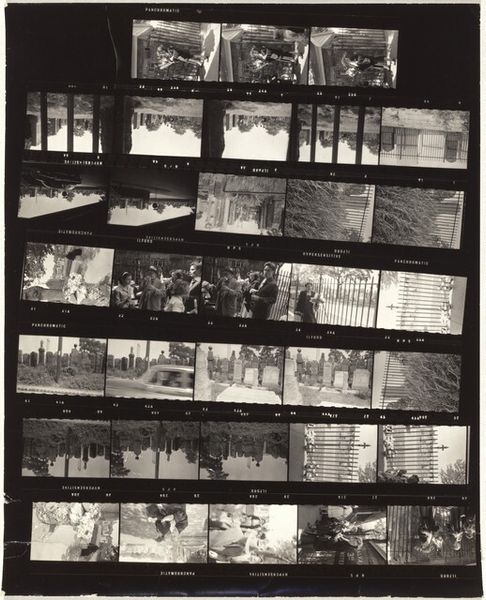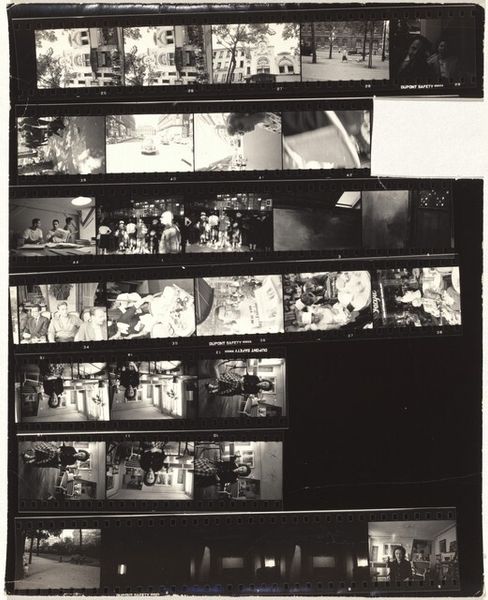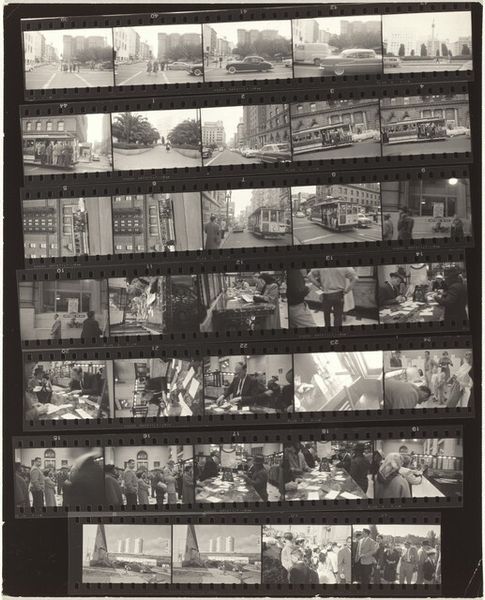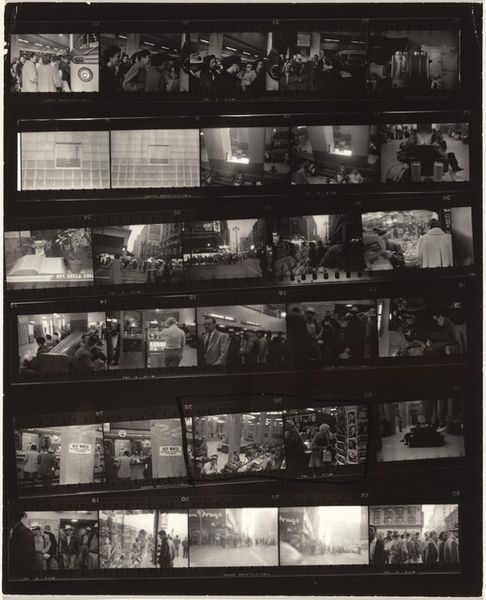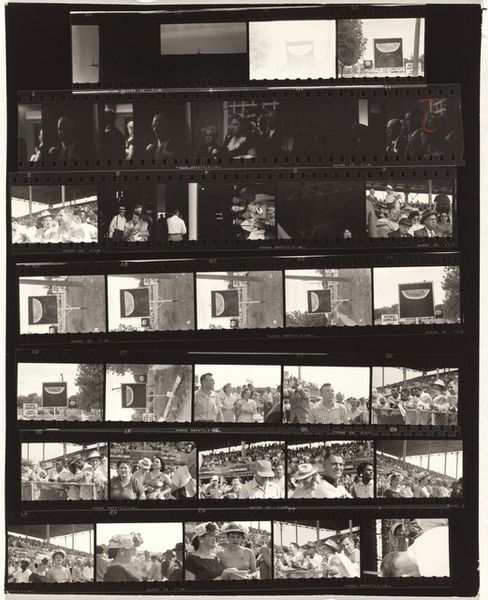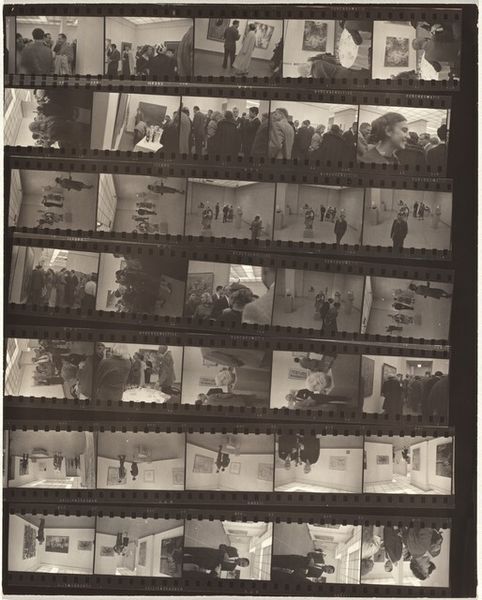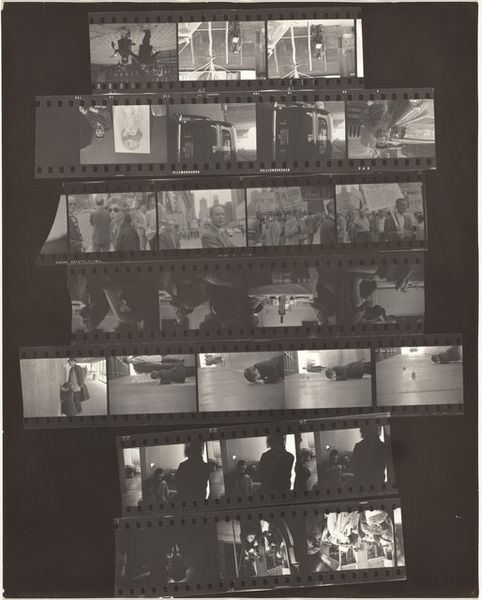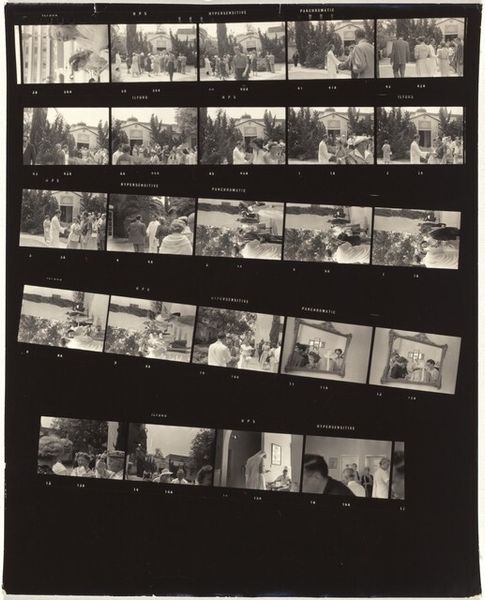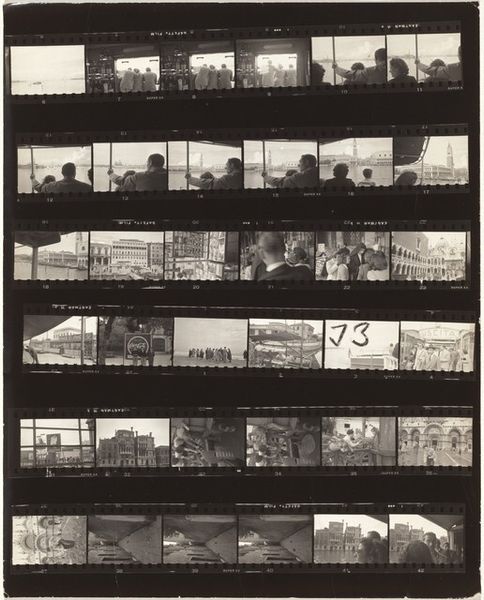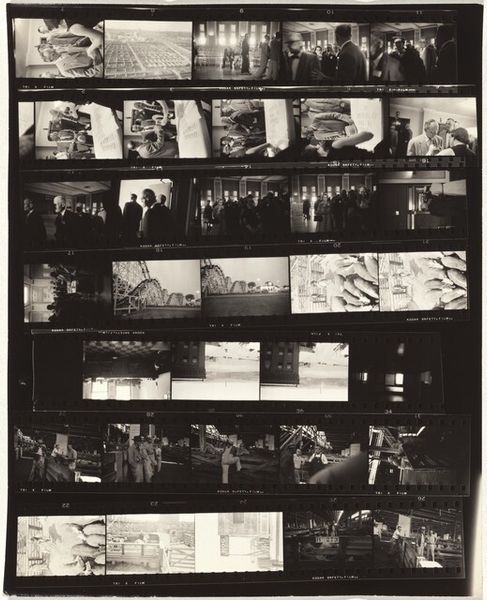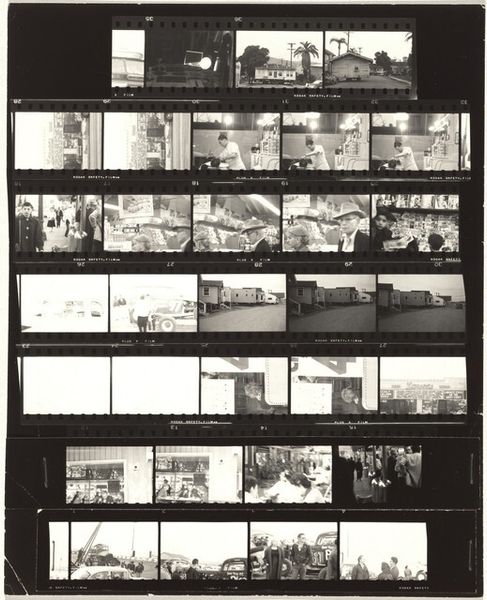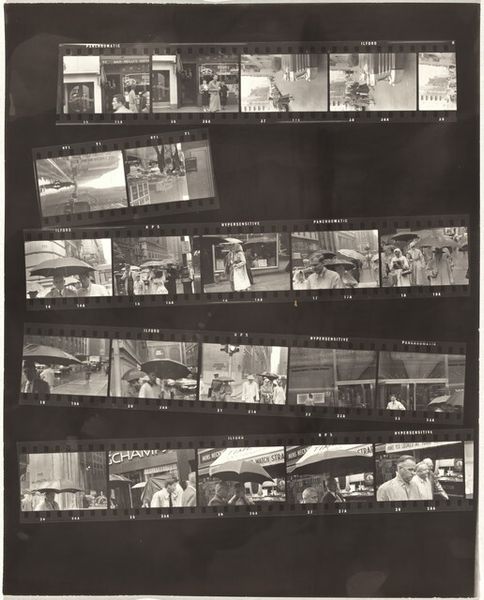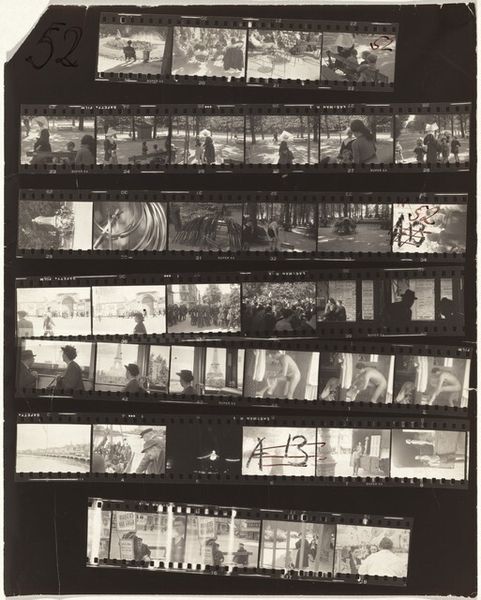
photography
#
film photography
#
black and white photography
#
landscape
#
photography
#
monochrome photography
#
monochrome
#
monochrome
Dimensions: overall: 25.3 x 20.4 cm (9 15/16 x 8 1/16 in.)
Copyright: National Gallery of Art: CC0 1.0
Editor: This is Robert Frank’s "Guggenheim 346 – Esso Oil Refinery, Baton Rouge, Louisiana" from 1955, a gelatin silver print. I’m immediately struck by how the film strip format presents industry in multiple frames, like a contact sheet exploring a process. What stands out to you? Curator: The decision to present the work as a film strip emphasizes its nature as documentation of a specific process, rather than as a single, idealized image. Note how it shows the labor involved: we see both the exterior, with tanks and workers cycling past, and interior shots seemingly depicting white collar activity or management. It presents a sort of… infrastructure of labor, no? Editor: Yes, I see what you mean. The cyclical repetition of some of the imagery, especially those tanks and the workers, drives that point home. So, is Frank highlighting the repetitive, almost mechanical nature of the work? Curator: Precisely. The medium itself, film, is of course tied to mass production and reproduction. Think of the scale of oil production, how its efficient operation also relies on those administrative roles, evidenced by the different class of labour in the office spaces… the image is embedded within capitalism's mechanics, even down to the materiality of photographic processes and the economics of art itself. How might this differ if he had, say, painted it? Editor: If this was a painting, the manual labour of the artist would be front and center, almost obscuring the labor within the refinery. The photo foregrounds the means and social context around the work involved. It's interesting to see the work presented this way. Curator: Exactly! The act of photographing, printing and even its eventual display becomes part of that capitalist system it portrays. Thanks to its material qualities, we now see how photographic images can both critique and embody socio-economic processes. Editor: I hadn't considered the materials and the making of the photo itself as a part of the narrative. I’ll be thinking about that for a while.
Comments
No comments
Be the first to comment and join the conversation on the ultimate creative platform.
